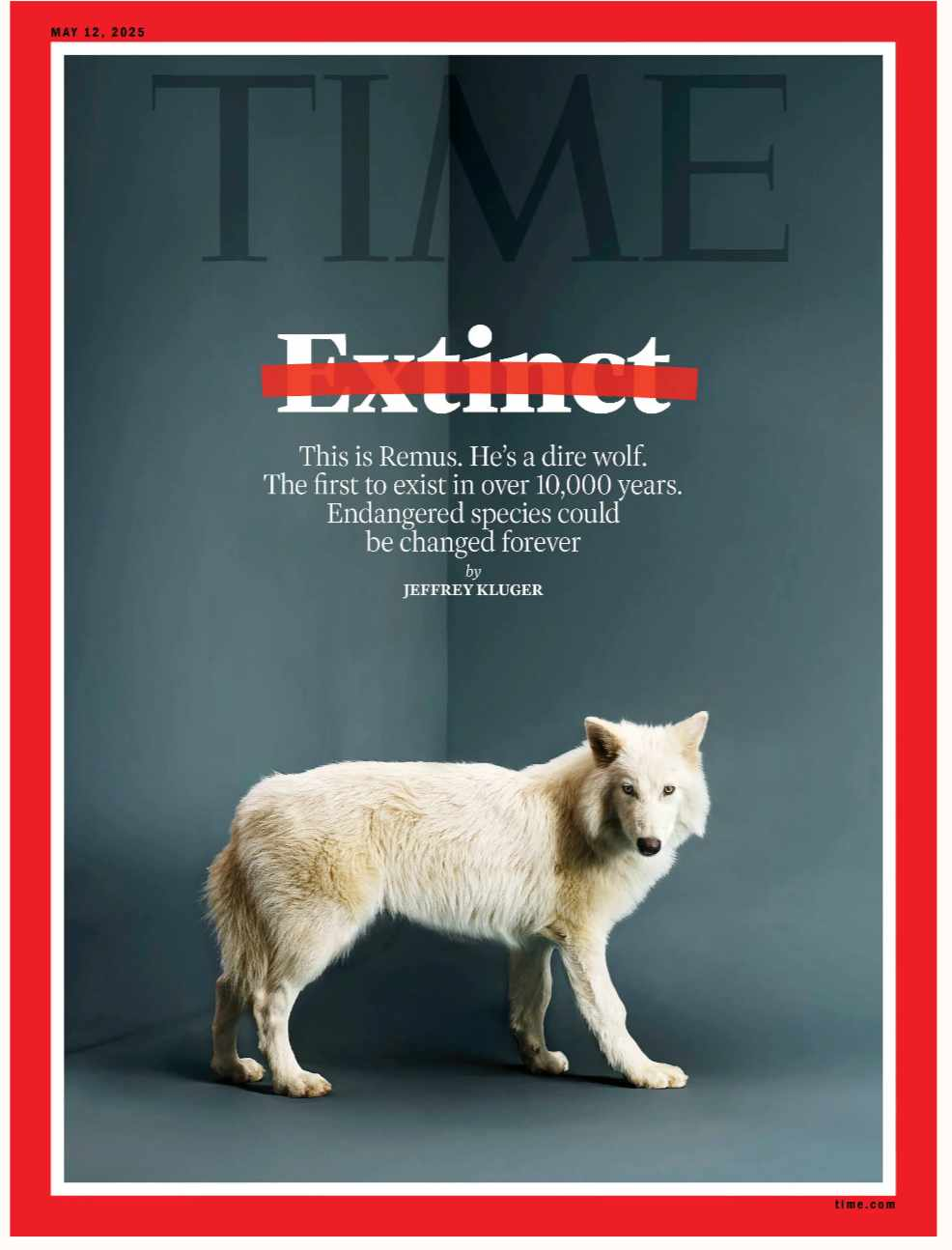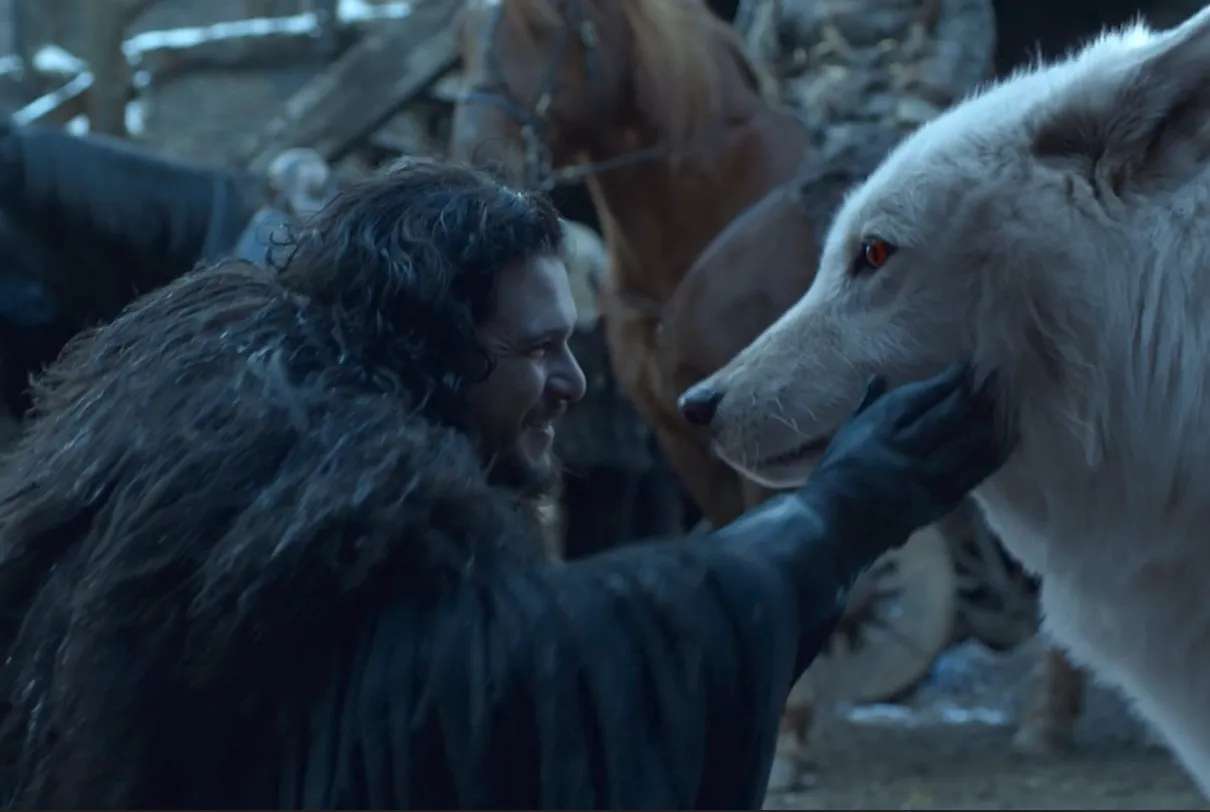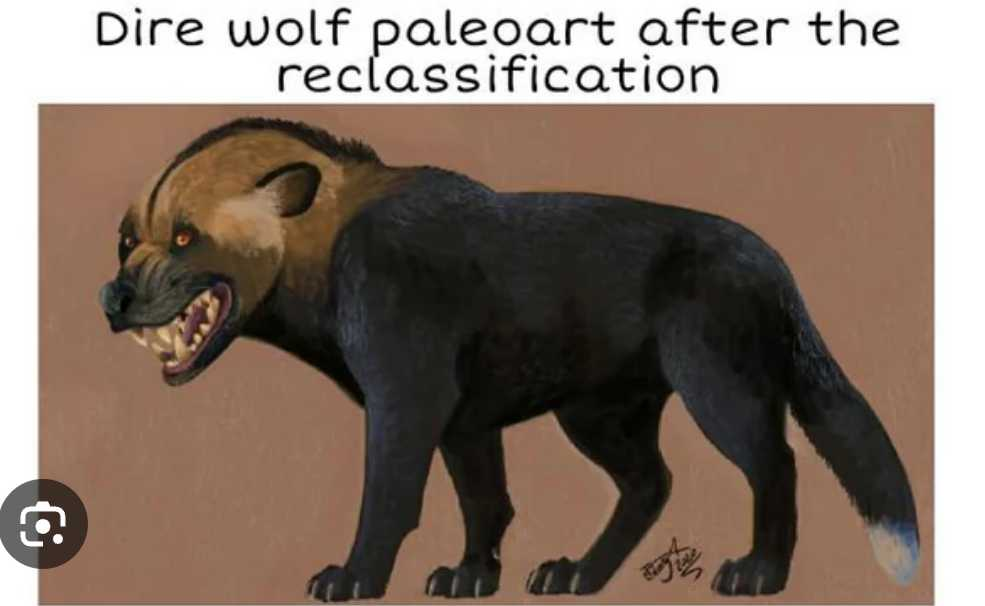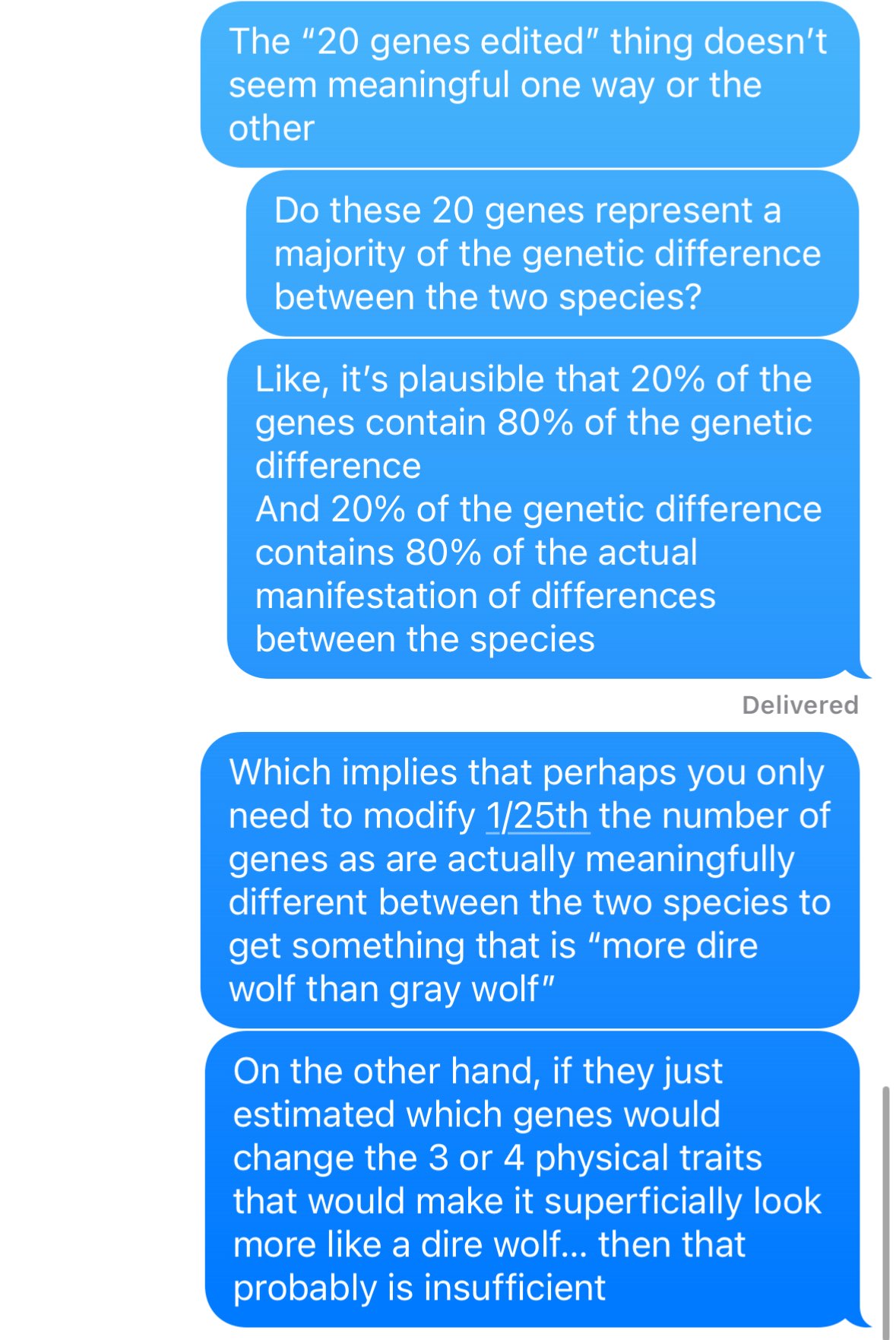
Wikipedia: https://en.m.wikipedia.org/wiki/Colossal_Biosciences
This resolves YES if the Wooly Mammoth, Tasmanian Tiger, Dodo Bird, or any other extinct species has been de-extincted by the end of 2028 by Colossal Biosciences (or a company or organization that purchases them, contracts with them, or is associated with them meaningfully).
By “de-extincted” this would probably look like the birth of a mammoth calf or dodo chick, for example. If they find another way of bringing back a specimen to life that’s okay too, although I can’t really imagine how that would work.
Should be fairly clear-cut of a resolution but I will still not bet in this market so I can remain unbiased.
(EDIT: It looks like it will actually not be a clear-cut resolution haha)
Update 2025-04-07 (PST) (AI summary of creator comment): Additional De-extinction Validation for Genetically Modified Specimens:
For cases involving modified species (e.g., attempts to create a Dire Wolf by inserting genes into Gray Wolf DNA), a YES resolution requires convincing scientific validation that the resulting specimen meets the criteria for being of the target extinct species.
The specimen should be plausibly able to breed with established members of the target species.
It should be genetically closer to the target species than to its original lineage.
Without such validation, modifications that only insert a few genes or alter the appearance are not sufficient to count as de-extinction.
Update 2025-04-07 (PST) (AI summary of creator comment): Additional Guidance on Validation for Modified Specimens:
One specimen is sufficient: A single specimen can count toward a YES resolution if it meets the criteria.
Viability is confirmed: The specimen’s current viability is considered adequate.
Target species validation: For cases like recreating a Dire Wolf, there must be persuasive evidence that the specimen is truly of the target extinct species and not merely a Gray Wolf with a few modified traits.
Acceptable forms of validation may include:
A clear consensus among other scientists that the specimen qualifies as the target species.
A peer-reviewed study showing significant genetic alignment (for example, a quantifiable measure like 65% progression from the original species toward the extinct one).
A detailed analysis (such as a well-documented blog post) that provides compelling scientific reasoning.
Interbreeding criteria: Although not detailed further, the specimen is expected to be plausibly able to breed with established members of the target species as per the original resolution guidelines.
Update 2025-04-07 (PST) (AI summary of creator comment): Update from creator
Preponderance of Evidence: The resolution for modified specimens (e.g., recreating a Dire Wolf) will be determined by the overall consensus and weight of scientific evidence over a couple of months.
Yes Resolution Criteria: If the consensus is that the specimen is "sort of a dire wolf but it's not perfect," the market will resolve as YES.
Ambiguous Outcome: If the consensus is that the specimen is merely a wolf with a few traits reminiscent of a dire wolf (i.e., just giving off dire wolf vibes), the resolution will remain unconfirmed until further evidence is provided (with the market holding out until the end of 2028).
Personally I would be more amiable to Colossal defining de-extinction as including stuff with only the subset of genes changed that disproportionately affect major visible differences, if they hadn't created a creature that even phenotypically does not resemble what current palaeontology says dire wolves were like, let alone genetically, instead resembling the medieval fantasy version of them from Game of Thrones.
Colossal Biosciences dire wolf:

Game of Thrones dire wolf:

Current palaeontological dire wolf:

@TheAllMemeingEye ya, this paper in particular is making me skeptical, suggesting that Dire Wolves are actually quite distant from gray wolves, phylogenetically: https://www.nature.com/articles/s41586-020-03082-x
@NicoMach the specimens from today are definitely sufficiently viable, but I think serious questions remain over whether these are really "Dire Wolves" or just "Gray Wolves with a small handful of traits that scientists expect Dire Wolves to have had". One specimen would suffice. I think something like "other scientists seem to generally be in agreement that the specimen is really what one might call a dire wolf" or "a peer-reviewed paper comes out showing that the animal is 65% of the way on the Gray Wolf to Dire Wolf spectrum" or even "really well-written ACX blog post that explains why it's extremely likely to be actually a dire wolf" or something like that would be persuasive.
@bens but @NicoMach I'm gonna probably go with the preponderance of evidence on this. Like, if the consensus after a couple months is "this thing is like more or less a dire wolf but it's not perfect", then this will resolve YES. If the consensus is "this thing is a wolf with a handful of physical traits that make it give off dire wolf vibes" then I'll hold out for 2028.
@NicoMach inability for (stable) interspecies reproduction is the best resolution criteria imo, and the most likely criteria to be cited by experts, it's been the best line in the sand we've had for defining a species for a long time.
It's also mechanistically important to how genetic trees (phylogeny) works. If interspecies reproduction was possible, you would never get the forking that occurs.
@bens Good proxy would be an expert claiming they at least think speciation has occurred by this definition
@ElliotDavies right. Since we can’t actually have these new wolves mate with extinct dire wolf specimens, them mating with each other is not really relevant to whether they’re actually “dire wolves” so to speak. I think I’ll defer to expert consensus for the most part.
@traders Okay, so there's actually a lot of reasons to believe that the reporting from Time is overly optimistic. I think this represents a Gray area (pardon the pun) and I'm not confident on how to resolve the market on the current news. This market lasts until 2028, so I will obviously not resolve NO yet.
But I'm not sure this should yield a YES resolution as it appears that the modifications to the Gray Wolf to make it a "Dire Wolf" exists closer to "taking a few Dire Wolf genes and inserting them into a Gray Wolf genome" than to "creating a specimen that could have actually bred with genetic Dire Wolves". I'm not going to resolve YES unless I see a convincing scientific validation that the Dire Wolf specimens were meaningfully Dire Wolves in that they could fulfill the scientific definition of belonging to that species, things like:
-being PLAUSIBLY able to breed successfully with Dire Wolves
-at least existing closer to Dire Wolves genetically than to Gray Wolves
-something of that nature, etc, etc
nvm. Someone already posted the link below.
https://time.com/7274542/colossal-dire-wolf/
This is going to come down to resolution criteria on what "counts" as a species de-extinction.
EDIT: read comments above
This will likely resolve YES if I can verify the accuracy of the Time story here (and other reporting):
https://time.com/7274542/colossal-dire-wolf/
Appears quite likely that this meets the threshold of "de-extincting" a species but it's possible it's a ruse or a heavy exaggeration, I guess.
I've seen ppl saying things like "no actual Dire Wolf DNA was used" because Colossal, like, modified the DNA they extracted from biological samples and didn't use the sequences directly? But... this strikes me as an unserious argument and lacks an understanding of how the de-extinction process was always intended.
@bens the question is basically philosophical on how close the genome has to be to count. They made 16 edits to a grey wolf genome, which diverged from dire wolves around 5.7 million years ago, they didn't do any large-scale genome synthesis to replicate the genome sequences we have from dire wolves, and the pups appear to be white, which is definitely not the colour dire wolves were. Grey wolves and dire wolves are not even in the same genus.
We'll get clues to how close they got on the skeletal morphology as time goes on.
@bens my bad, it was 20 edits across 14 genes
https://time.com/7274542/colossal-dire-wolf/
"It takes surprisingly few genetic changes to spell the difference between a living species and an extinct one. Like other canids, a wolf has about 19,000 genes. (Humans and mice have about 30,000.) Creating the dire wolves called for making just 20 edits in 14 genes in the common gray wolf, but those tweaks gave rise to a host of differences, including Romulus’ and Remus’ white coat, larger size, more powerful shoulders, wider head, larger teeth and jaws, more-muscular legs, and characteristic vocalizations, especially howling and whining."
@bens de-extinction can mean different things but I wouldn’t call it successful de-extinction of a species sunless a minimal population of viable, cross-fertile individuals has been established. At the very least one should have a pair able to mate in a zoo.
@bens my impression is that this, much like the “wooly mice”, is an overhyped marketing play. https://arstechnica.com/science/2025/04/de-extinction-company-announces-that-the-dire-wolf-is-back/

